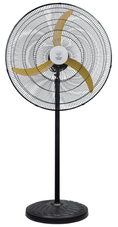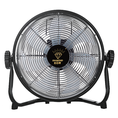The cookware industry is still trying to deliver on the early promise of microwaves as cooking (not simply reheating) appliances. The latest incarnation of this promise is the microwave rice cooker, which claims to produce perfect rice in a flash, without the time and mess of stovetop cooking or the counter space and expense required by electric rice cookers. These devices couldn’t be simpler—they resemble round plastic food-storage containers with vented snap-on lids. Rice and water are simply measured into the cooker, the lid is attached securely, and it’s all microwaved until the rice is done. Hoping the microwave might indeed offer a foolproof way to make rice, we tested five models ranging in price from $8.99 to $14.99 (all BPA-free), cooking one cup of long-grain white rice in each one.
But as a convenient product, it is not easy to make the rice cooker work. Why? The power of a microwave oven in a home kitchen varies greatly. Although kitchen utensils are accompanied by instructions, they are only used as guidelines. When we cooked in 700 to 1200 watt ovens according to the manufacturer's instructions, we got batches of uncooked or uncooked rice. This helps us understand that microwaves can only penetrate about one-second of an inch of food. In order to produce a fully boiled rice pot, we need to heat it from the surface to the inside of the grain. Success lies in the "low and slow" method, which allows heat to permeate the whole rice with lower power settings and longer cooking time, and allows starch granules to absorb moisture and soften to its core.
Since all the cookers gave acceptable results once we’d honed our technique, our choice came down to design and quality. Many models had fussy, multiple-part lids; these were complicated to dismantle and clean—and starchy cooking liquid leaked into their crevices. Our favorite model also had a dual-layer lid (designed to trap and return condensation to the pot), but the two parts detached easily. Most of the models that we tested felt flimsy and cheap compared with our sturdier favorite. We went on to try short-grain white rice, basmati, and brown rice in the winner, as well as larger quantities (2 and 3 cups) of white long-grain rice, with consistently good results.
In a side-by-side test, tasters showed an equal preference for microwaved rice and stovetop rice. We found that we could also successfully microwave rice using just a covered glass bowl and the same low-and-slow method, so a microwave rice cooker is definitely not a necessity, but it’s a fine product once you get it to work. Doing so will likely involve some experimentation, frustration, and wasted rice. But for those with limited counter space and a microwave (college students, for example), these cookers offer a convenient and affordable alternative to rice cookers and stovetop cooking.
















